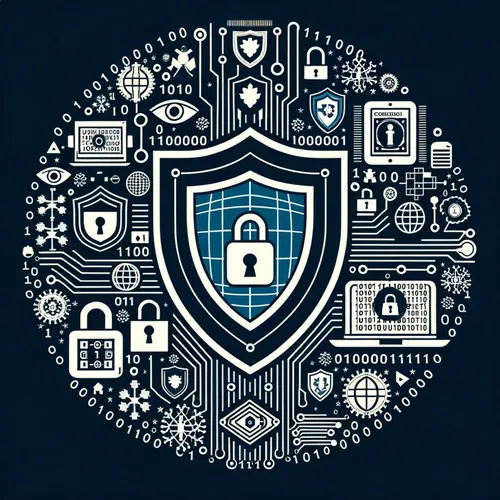China's Cyber Chess: US Races the Red Queen in Patch-or-Pray Showdown
- Author
- Quiet. Please
- Published
- Sun 24 Aug 2025
- Episode Link
- https://www.spreaker.com/episode/china-s-cyber-chess-us-races-the-red-queen-in-patch-or-pray-showdown--67497603
This is your Tech Shield: US vs China Updates podcast.
Listeners, it’s Ting here with your Tech Shield update, and whoa, this week in the U.S. cyber trenches has been pure adrenaline. Now, throw out any fantasies about lazy August: this one’s been a non-stop cyber chess match with Beijing. Let’s dive right into the cat-and-mouse, because waiting to patch gets you bitten!
The Department of Homeland Security, spurred by fresh advisories from CISA, rolled out two aggressive new cybersecurity initiatives aimed squarely at the threat landscape from advanced Chinese actors. Among the week's big reveals: a brand new mandatory vulnerability reporting protocol for federal agencies, with rapid 72-hour patch deadlines—finally, some SLA teeth! The focus is squarely on shoring up legacy communication infrastructure, especially after last year’s Chinese breach of U.S. court wiretap systems—yes, Salt Typhoon is still sending shockwaves through intelligence committees, with folks like Rick Crawford and Tulsi Gabbard calling for full reviews of any intelligence-sharing with European partners cozying up to Huawei hardware.
Over in the private sector, Michael Kratsios from the White House Office of Science and Technology Policy sent an unequivocal message to U.S. tech: align with the “U.S. AI technology stack” or risk letting China’s DeepSeek eat your lunch. That’s not just saber-rattling. DeepSeek, the new Chinese open-source rival to GPT-5, is optimized for Chinese chips and intentionally priced to undercut OpenAI. U.S. agencies are quietly tracking AI chip exports—and the private sector is finally, belatedly, getting serious about securing supply chains and source code.
Now, this week’s Microsoft patch (KB5063709) arrived—and, classic, it nuked reset and recovery tools on thousands of Windows devices. If you heard a groan from IT teams coast-to-coast, that was it. But cybercriminals don’t hit pause: threat actors have unleashed new malware, like PipeMagic, disguised as ChatGPT—leveraging zero-days and sidestepping Microsoft Defender. Even more alarming, botnets bred in Chinese threat actor labs, like Gayfemboy, jumped on fresh device vulnerabilities, from DrayTek routers to Realtek modules. FortiGuard Labs notes how operators this year evolved tactics to bypass DNS filtering and used time-based sandbox evasion. Scary stuff, and a nightmare for enterprise defenders still fighting on fragmented, hasty-patched networks.
Industry’s response? Some impressive moves: Google’s Threat Analysis Group cranked up attack surface reduction, and AWS rolled out default Zero Trust segmentation on cloud accounts most at risk from foreign infiltration. CISO circles buzzed about AI-powered threat intelligence tools and behavioral anomaly detection—these promise real-time pinning of malicious pivots, but the gap between marketing and deployed protection, especially in smaller entities, remains enormous.
Here’s the expert angle: We’re getting better, but, honestly, this is more Red Queen’s Race than Mission Accomplished. We’re seeing historic investments and smarter playbooks, but the pace of new zero-days and China’s state-supported innovation still outstrips American patch cycles and information sharing. According to Palo Alto’s retiring Nir Zuk, “You can’t win with patch-and-pray.” He’s right. We need not just faster patching, but also a deeper culture of cyber resilience, relentless red-teaming, and a modernized digital identity backbone.
Thanks for tuning in—don’t forget to subscribe for more unfiltered Tech Shield analysis from Ting. This has been a quiet please production, for more check out quiet please dot ai.
For more http://www.quietplease.ai
Get the best deals https://amzn.to/3ODvOta
